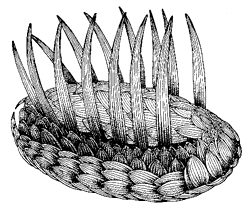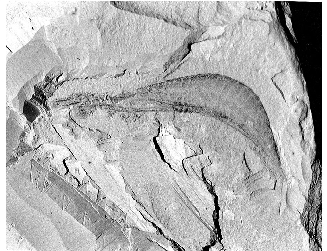As the old saying goes, in a country of blind men the one-eyed man is King.
But what about five eyes and a single grasping claw? This is
Opabinia, a representative of a novel phylum that spontaneously
arose during the Cambrian age, 500 million years ago:
Unfortunately, for some reason this guy didn’t "make the cut", and failed
to survive the "Cambrian extinction", an evolutionary screening event that
sent many of the newly developed Cambrian design experiments to their graves.
Considering that the Cambrian age was the time when eyes were invented,
why wouldn’t "more" be better?
Along with him expired hallucigenia, a truly weird prototype with
spikes for feet and a number of hollow breathing (feeding?) tubes along its
back:

It’s entirely possible that paleontologists have been depicting him
upside-down. Maybe the tubes were actually his feet, and the spines
were pointed up as protection, as in Wiwaxia, another Cambrian
creation:

Fortunately for us, this fellow did survive: Haikouella lanceolata,
put forward as the earliest Chordate -- from which evolved vertebrates
including fish and fowl, dinosaurs and donkeys, monkeys and men. Quite a
humble beginning indeed -- and possibly instructive in some sense for the
egocentric assholes around us that continually boast about their special
position in the Universe. But for the grace of God -- or of Fate, if you
prefer -- this particular biological experiment might have expired too…

Of course, some (Gould, et. al.) point to an alternate possible candidate
for the earliest chordate, known as Pikaia. This chap is found slightly
later, in middle-Cambrian era fossils:
Personally, I have a hard time figuring out which side the "head" is at. So
do paleontologists. There is no evidence of sensory organs on this guy, nor
brain, nor much else. All that is evident is the presence of an apparent
notochord, an early spinal column -- the key characteristic of a
vertebrate. I much prefer Haikouella as my old man…
Back to Lost Articles...
